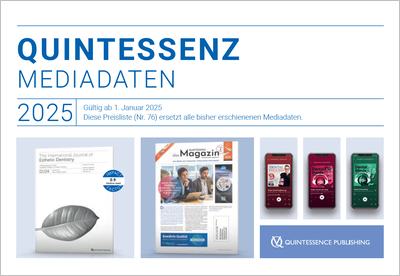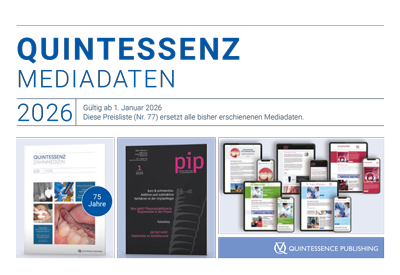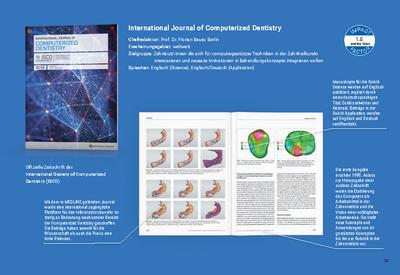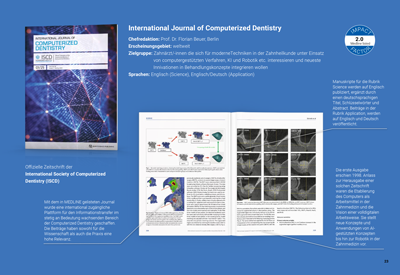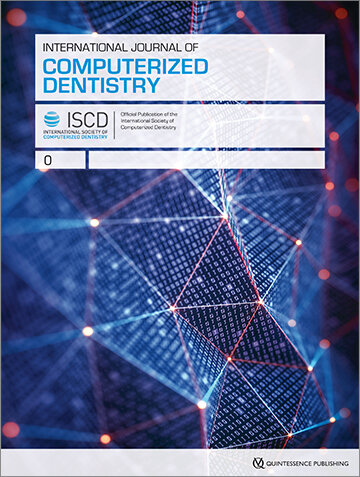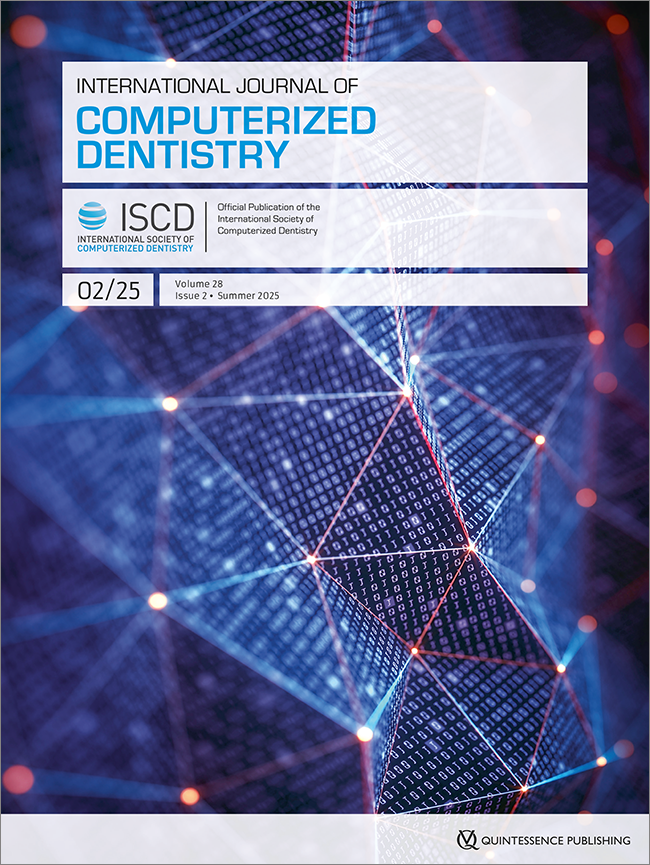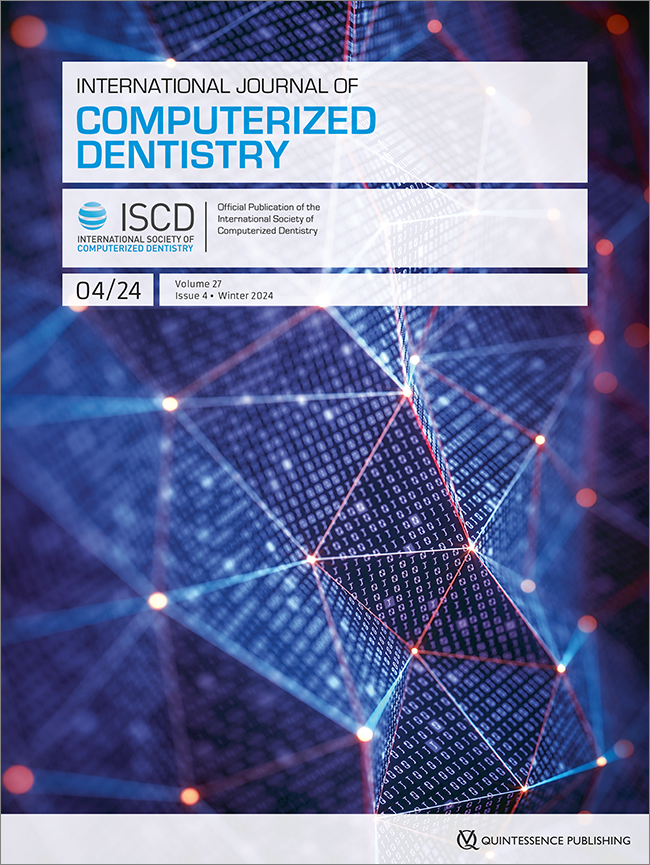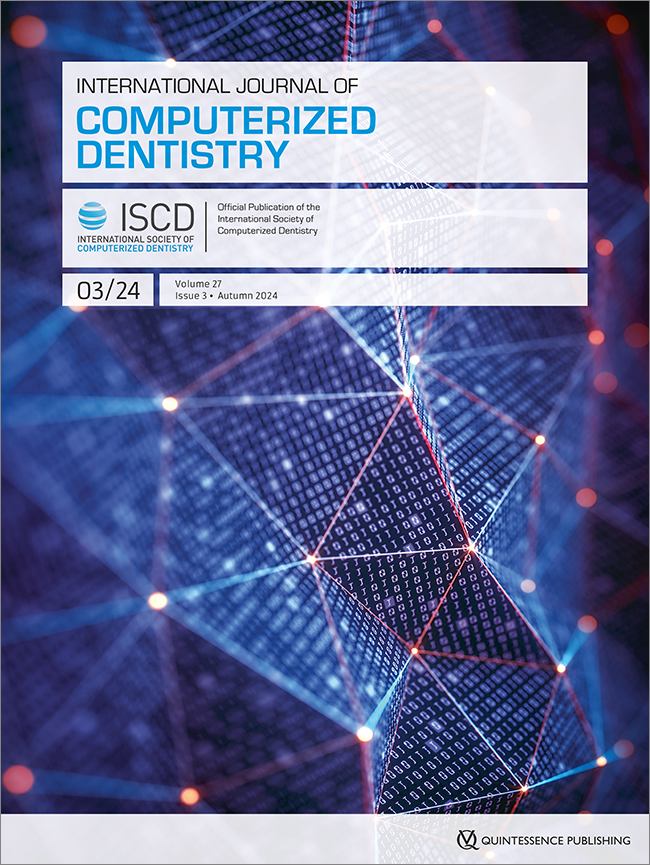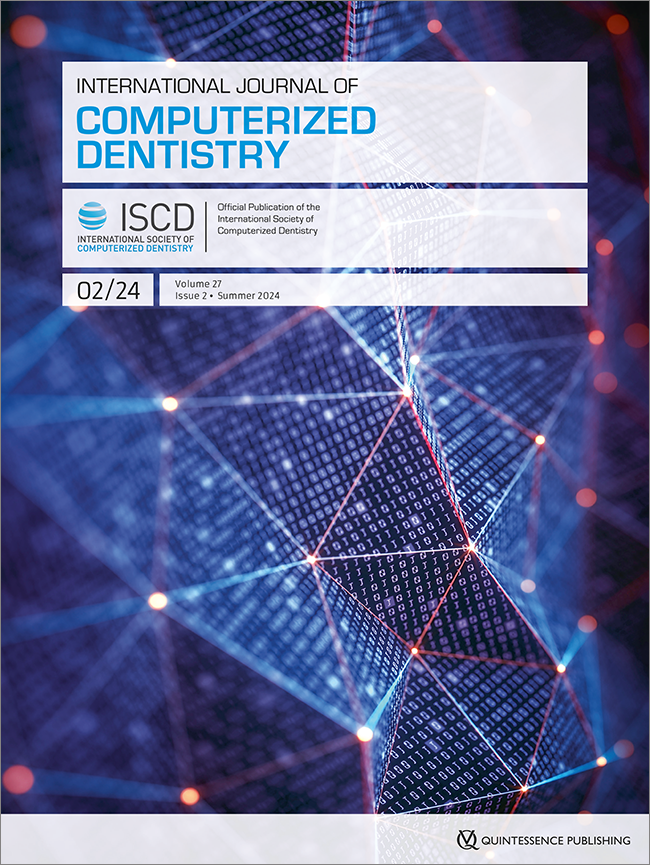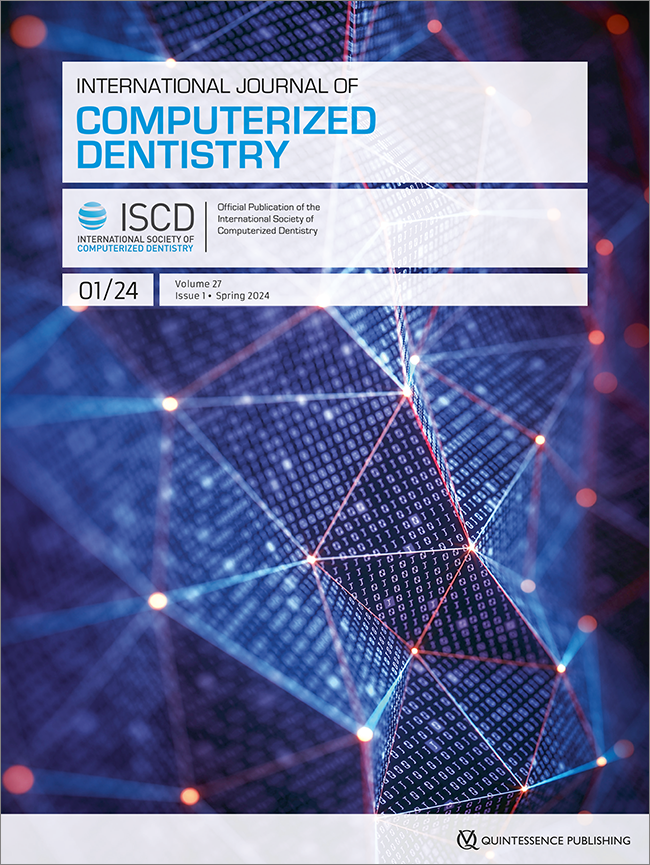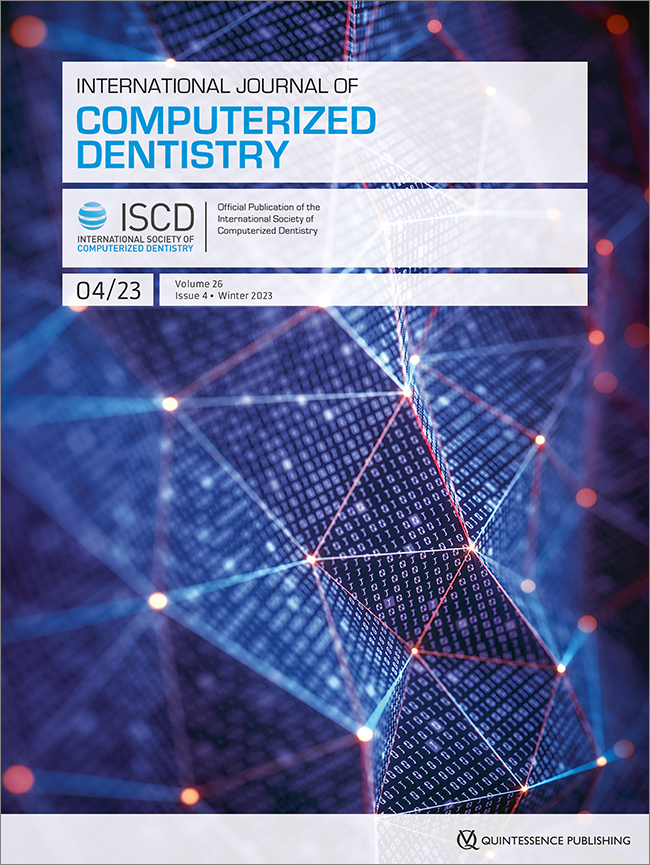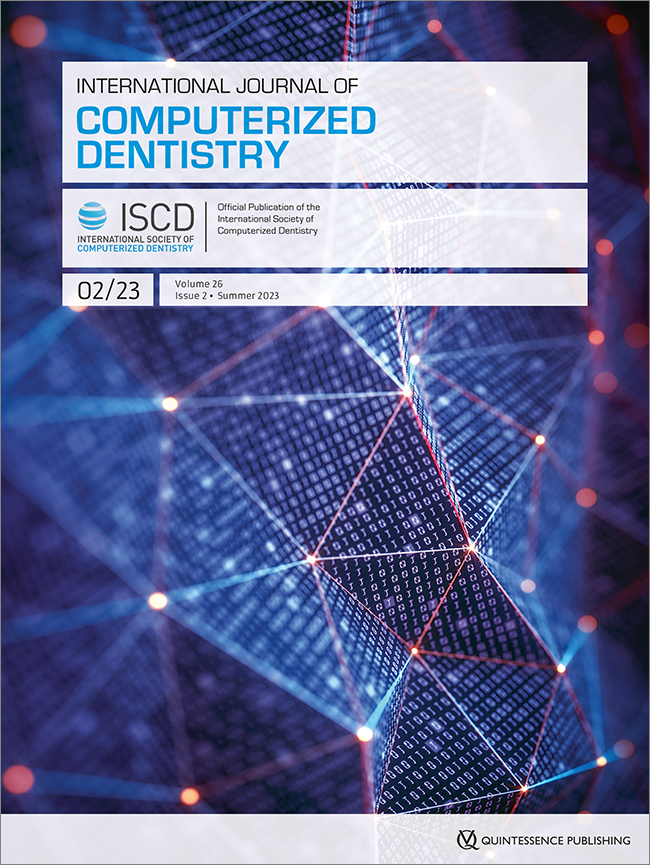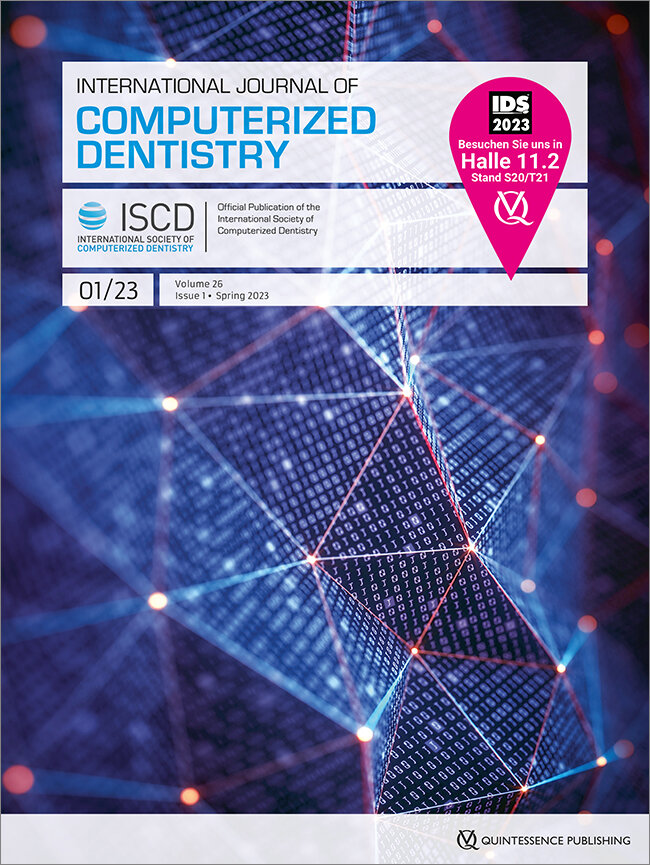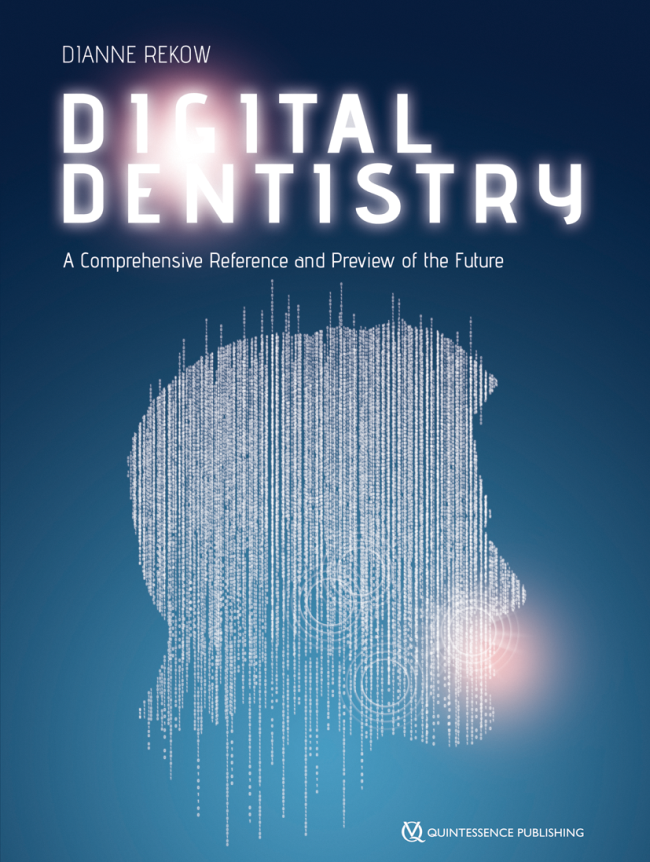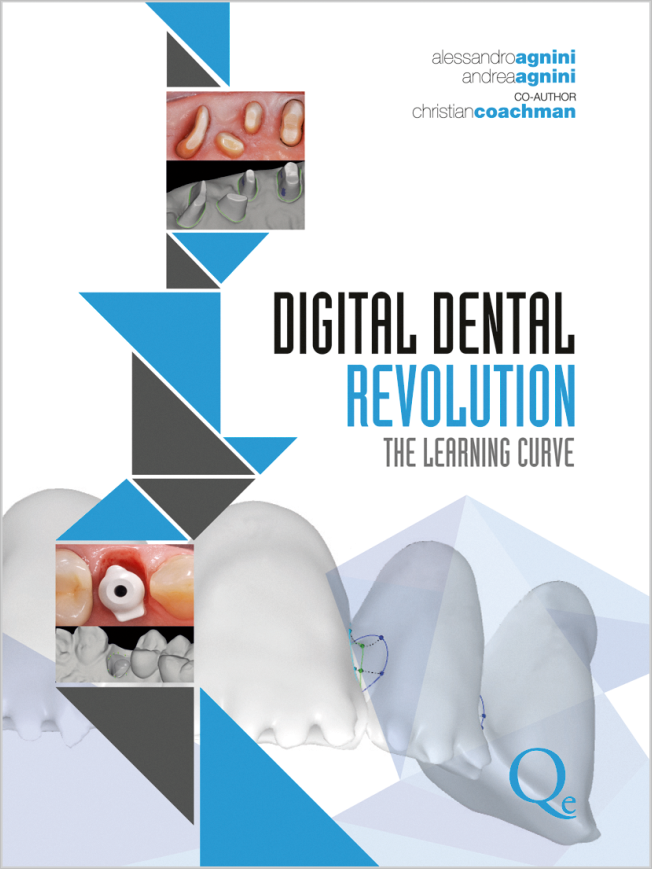EditorialDOI: 10.3290/j.ijcd.b6336051Pages 95-97, Language: English, GermanBeuer, FlorianScienceDOI: 10.3290/j.ijcd.b5394865, PubMed ID (PMID): 38801193Pages 101-116, Language: English, GermanSadilina, Sofya / Strauss, Franz J. / Jung, Ronald E. / Joda, Tim / Balmer, MarcAim: The aim of the present scoping review was to identify the scientific evidence related to the utilization of optical see-through head-mounted display (OST-HMD) in dentistry, and to determine future research needs. Methods: The research question was formulated using the “Population” (P), “Concept” (Cpt), and “Context” (Cxt) framework for scoping reviews. Existing literature was designated as P, OST-HMD as Cpt, and Dentistry as Cxt. An electronic search was conducted in PubMed, Embase, Web of Science, and Cochrane Central Register of Controlled Trials (CENTRAL). Two authors independently screened titles and abstracts and performed the full-text analysis. Results: The search identified 286 titles after removing duplicates. Nine studies, involving 138 participants and 1760 performed tests, were included in the present scoping review. Seven of the articles were preclinical studies, one was a survey, and one was a clinical trial. The included articles covered various dental fields: three studies in orthodontics, two in oral surgery, two in conservative dentistry, one in general dentistry, and the remaining one in prosthodontics. Five articles focused on educational purposes. Two brands of OST-HMD devices were used: in eight studies Microsoft HoloLens was used, while Google Glass was utilized in one study. Conclusions: The overall number of included studies was low; therefore, the available data from the present review cannot yet support an evidence-based recommendation for the clinical use of OST-HMD. However, the existing preclinical data indicate a significant capacity for clinical and educational implementation. Further adoption of OST-HMD devices will facilitate more reliable and objective quality and performance assessments as well as more direct comparisons with conventional workflows. More clinical studies must be conducted to substantiate the potential benefits and reliability for patients and clinicians.
Keywords: augmented reality, dental education, digital dentistry, mixed reality, scoping review, virtual reality
ScienceDOI: 10.3290/j.ijcd.b5036725, PubMed ID (PMID): 38426831Pages 117-127, Language: English, GermanRobert, Nathalie / Bechet, Eric / Albert, Adelin / Lamy, MarcAim: The aim of the present in vitro study was to investigate the influence of scan paths on the accuracy (trueness and precision) of intraoral scanning of an implant impression on an edentulous patient. Materials and methods: An epoxy resin maxillary cast was made with six bone level implants (NobelParallel Conical Connection RP). The implants were placed at the sites of the central incisors, canines, and first molars. The transgingival component (multi-unit) was screwed onto the implants. The scanbodies (Elos Accurate IO 2C-A) were then screwed onto the multi-units. The cast was run through a coordinate measurement machine to obtain a control model. Then, five different scanning paths were applied by a single operator: the zigzag technique (ZZT); the zigzag technique with palatal (ZZTP); the wrap technique (WT); the wrap technique with palatal (WTP); and the big zigzag technique (BZZT). Finally, each scan was compared with the control model. Results were assessed by one-way ANOVA and linear mixed effects models with a significance level of P 0.05. Results: The results showed that scan paths ZZT and ZZTP had significantly lower absolute positioning errors and root mean square errors than the other techniques (P 0.0001). For distances between consecutive implant axes and for absolute vertical errors, their superiority was borderline (P 0.10). Overall, techniques ZZT and ZZTP were equally performant and proved to be the most accurate scan paths. Conclusions: The present in vitro experimental study demonstrates that the scan path can have an influence on the accuracy of the optical impression for full-arch rehabilitations on implants.
Keywords: accuracy, digital impression, edentulous, implant, impression, intraoral scanner, scan path
ScienceDOI: 10.3290/j.ijcd.b5290621, PubMed ID (PMID): 38700087Pages 129-139, Language: English, GermanDurmaz Yilmaz, Ozden Melis / Tasyurek, Murat / Gumus, Hasan OnderAim: The purpose of the present study was to develop low-cost software that enables the detection of tooth colors by capturing photographs using various devices and to compare the effectiveness with existing expensive methods. Materials and methods: A total of 60 maxillary central incisors from 30 individuals were included in the study. The CIELAB values (L*, a*, b*) of each tooth were measured using a spectrophotometer, which is considered the gold standard. Subsequently, photographs of the teeth were taken using four different smartphones (iPhone and Xiaomi brands) and one digital camera (Canon EOS 70D DSLR). These images were then subjected to image processing techniques and compared with measurements obtained through computer-based analysis to assess the correlation. The Kruskal-Wallis H test was used (for data in three or more groups), and multiple comparisons were conducted using the Dunn test. The significance level was set at P 0.05. Results: On examining the results of multiple comparisons, a statistically significant difference was observed (P 0.001) between the Delta E (ΔE) values obtained from the iPhone cameras and those obtained from the Canon and Xiaomi cameras. The iPhone cameras yielded ΔE result values ranging from 2.68 to 2.90. Conclusions: Color determination methods based on the image processing of photographs taken with iPhone cameras could potentially gain an advantageous position in routine clinical practice as compared with spectrophotometry.
Keywords: color detection, color difference, image processing, shade matching, smartphones, spectrophotometer
ScienceDOI: 10.3290/j.ijcd.b5117207, PubMed ID (PMID): 38517070Pages 141-149, Language: English, GermanAtak Ay, Buse / Türker, Şebnem BegümAim: The aim of the present study was to examine the color stability of laminate veneer restorations fabricated with various CAD/CAM materials applied to bleached teeth. Materials and methods: Eighty maxillary central incisors extracted due to periodontal, orthodontic, or trauma problems were used. The teeth were embedded in acrylic blocks and divided into eight groups (n = 10). Groups A, B, C, and D were bleached with a vital bleaching agent before preparation, and the teeth were prepared for laminate veneer restorations. Groups E, F, G, and H were prepared without bleaching. Groups A and E were restored with GC Initial LiSi HT Blocks A1, Groups B and F with GC Initial LiSi LT Blocks A1, Groups C and G with IPS e.max CAD HT Blocks A1, and Groups D and H with IPS e.max CAD LT Blocks A1. All restorations were adhesively cemented and aged for 2 and 5 years with thermal cycling. Color measurements of the restorations were taken with a spectrophotometer at baseline and after 2 and 5 years of aging. Results: Teeth in all the bleached groups showed more color changes than those in the unbleached groups. After 2 years of aging, the least color change was observed with GC Initial LiSi LT (ΔE00 = 0.808) and IPS e.max CAD LT (ΔE00 = 0.813) materials, which were used on unbleached teeth, and the most color change was observed with GC Initial LiSi HT (ΔE00 = 0.934) and IPS e.max CAD HT (ΔE00 = 0.923) materials, which were used on bleached teeth. After 5 years of aging, the least color change was observed with IPS e.max CAD LT (ΔE00 = 0.831) and GC Initial LiSi LT (ΔE00 = 0.839) materials, which were used on unbleached teeth, and the most color change was observed with GC Initial LiSi HT (ΔE00 = 0.957) and IPS e.max CAD HT (ΔE00 = 0.938) materials, which were used on bleached teeth. Conclusions: Bleaching and translucency affect color stability. No difference was detected between the color changes of GC Initial LiSi and IPS e.max CAD materials. The increase in aging time increased the color changes of all materials. Clinical significance: Bleaching and laminate veneer restorations may be preferred in many patients. For this reason, the long-term color changes of laminate veneer restorations applied to bleached teeth is clinically very relevant. The present study aimed to evaluate the effect of tooth bleaching on the long-term color stability of laminate veneer restorations fabricated with various CAD/CAM materials of different translucencies.
Keywords: bleaching, CAD/CAM, color, laminate veneer
ScienceDOI: 10.3290/j.ijcd.b5117247, PubMed ID (PMID): 38517069Pages 151-161, Language: English, GermanElawady, Dina Mohamed / Denewar, Mohamed / Alqutaibi, Ahmed Yaseen / Ibrahim, Wafaa IbrahimAim: The objective of the present study was to evaluate the peri-implant marginal bone loss (MBL) and prosthodontic complications of maxillary screw-retained implant prostheses fabricated from digital versus conventional full-arch implant impressions. Materials and methods: Twenty-eight participants with edentulous maxillary arches were randomly selected and enrolled in two equal groups: Group I (conventional impression group, CIG); Group II (digital impression group, DIG). All patients were rehabilitated with a maxillary screw-retained implant prosthesis retained by six implants. Peri-implant MBL and prosthodontic complications were recorded at 6, 12, and 24 months. Data were collected and statistically analyzed. Results: Regarding the effect of time, there was a statistically significant increase in MBL at the 6-, 12-, and 24-month follow-ups (P 0.001). Regarding the effect of groups, there was no statistically significant difference in MBL between CIG and DIG at 6, 12, and 24 months, where P = 0.083, 0.087, and 0.133, respectively. Prosthetic complications were recorded 19 times in CIG and 12 times in DIG, with no significant difference between the groups (P = 0.303). Conclusion: Digital full-arch implant impression is a reliable impression technique and may represent an alternative to conventional implant impression technique in the fabrication of maxillary screw-retained implant prostheses.
Keywords: conventional implant impression, digital implant impression, full-arch implant impression, marginal bone loss, maxillary screw-retained prosthesis, prosthodontic complications
ApplicationDOI: 10.3290/j.ijcd.b6262983Pages 163-177, Language: English, GermanGraf, Tobias / Aini, Tuba / Stimmelmayr, Michael / Brandt, Silvia / Güth, Jan-FrederikBackground: Implantology is becoming increasingly digital, opening up new therapy options to achieve preferably predictable and complication-free results. One key parameter for success seems to be stable and fixed soft tissue around the implant as well as the prosthodontic supply. The concept presented in this article aims for an anatoform and stable emergence profile around implants in a digital workflow applying individual polyetheretherketone (PEEK) healing abutments. Case presentation: A 63-year-old female patient presented to the Department of Prosthodontics at the Center for Dentistry and Oral Health of the Goethe University Frankfurt with implants inserted at regions 45 and 47 and conventional titanium healing abutments. An intraoral scan was performed and a screw-retained 3-unit fixed dental prosthesis (FDP) was designed. On the basis of the CAD, individual healing abutments were designed and fabricated out of PEEK, representing a similar emergence profile to that of the final FDP. The components were fabricated in a milling center and finalized. After soft tissue relocation, the individual PEEK healing abutments were placed. Then, after a 3-week rest period, a screw-retained FDP fabricated out of monolithic zirconium oxide was inserted without further soft tissue compression. Conclusion: Individual healing abutments fabricated out of PEEK might be an interesting therapy option for shaping the soft tissue around implants and can be supplemented as a straightforward tool especially in fully digital workflows.
Keywords: digital workflow, healing abutment, implant prosthetics, individual healing abutment, PEEK, screw-retained fixed dental prostheses






